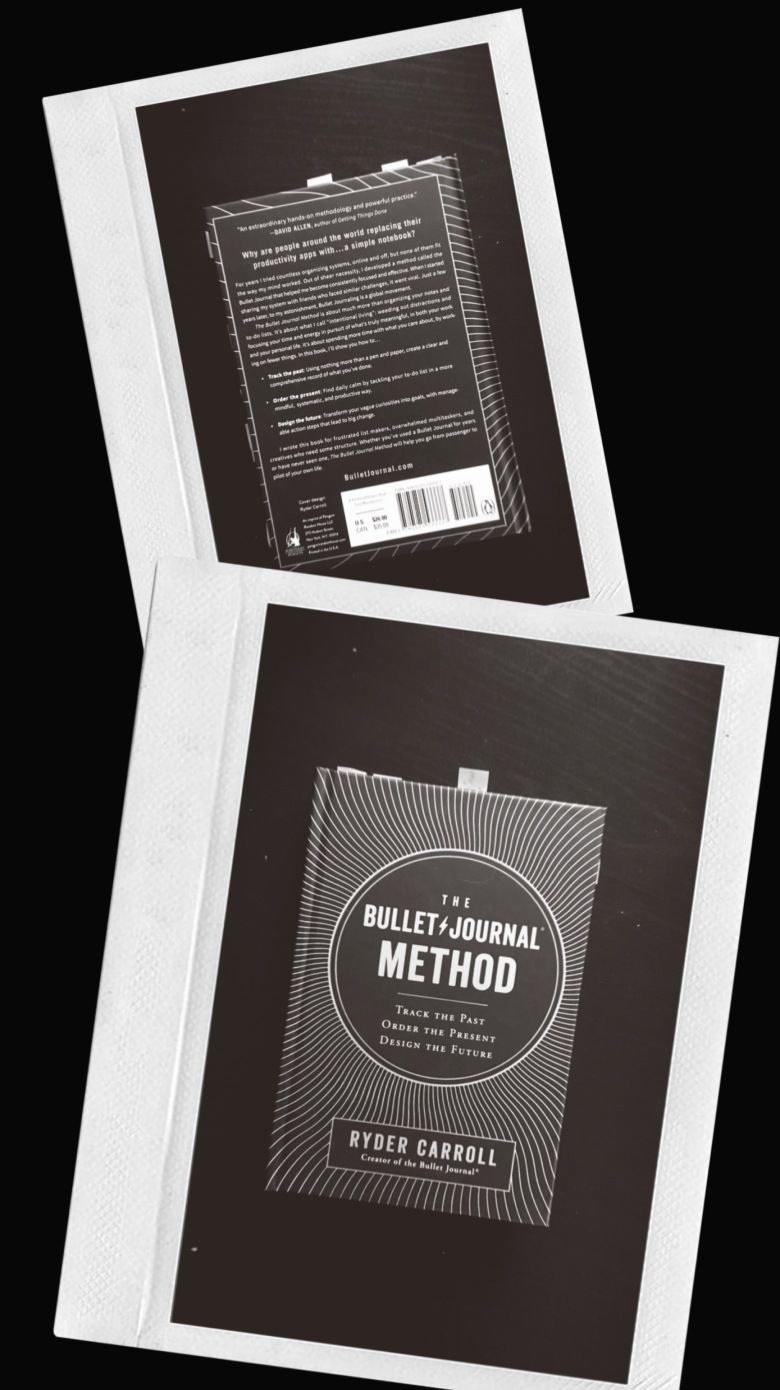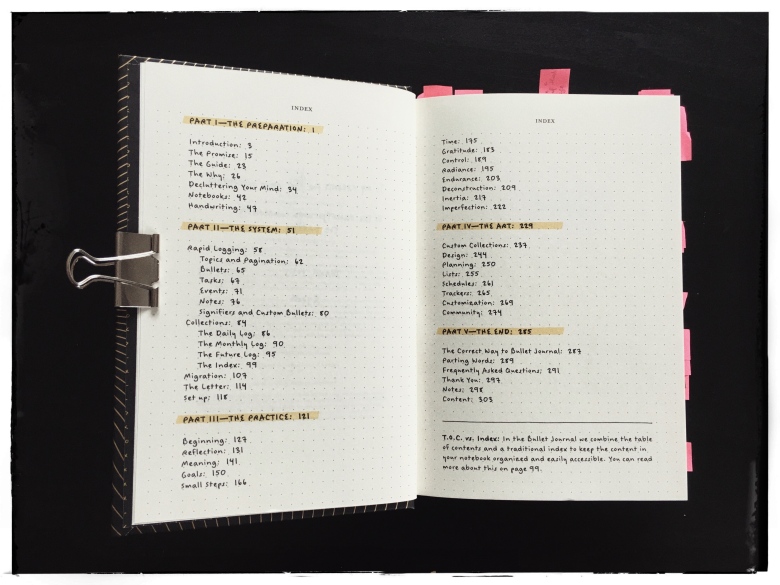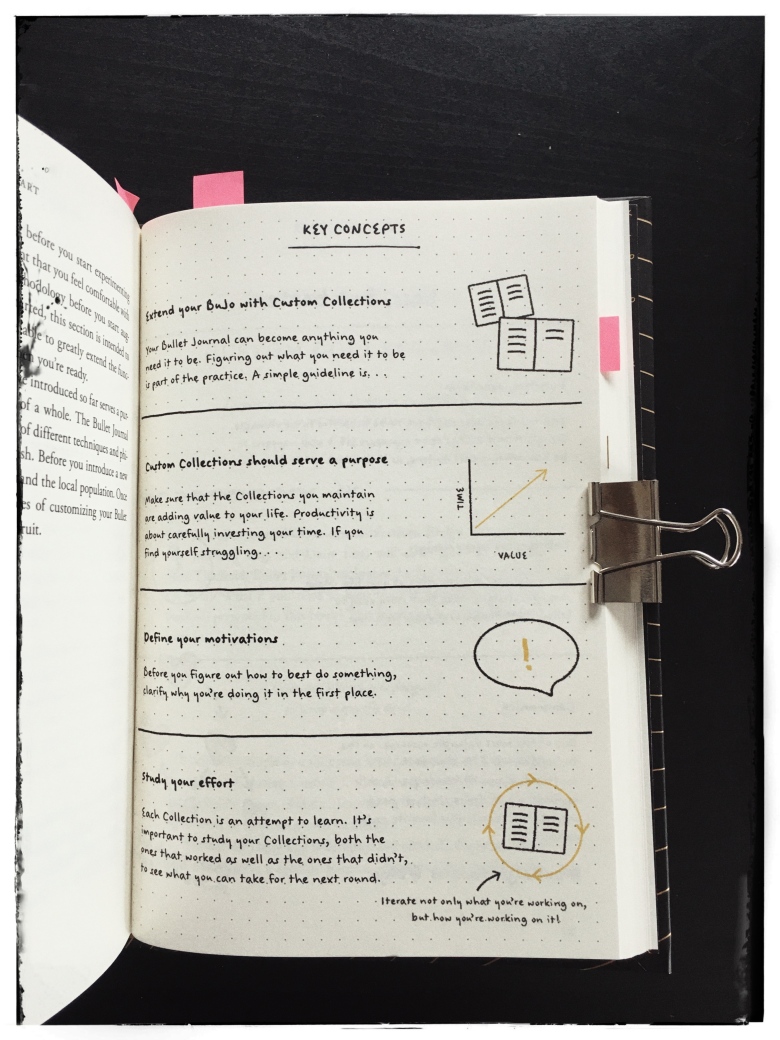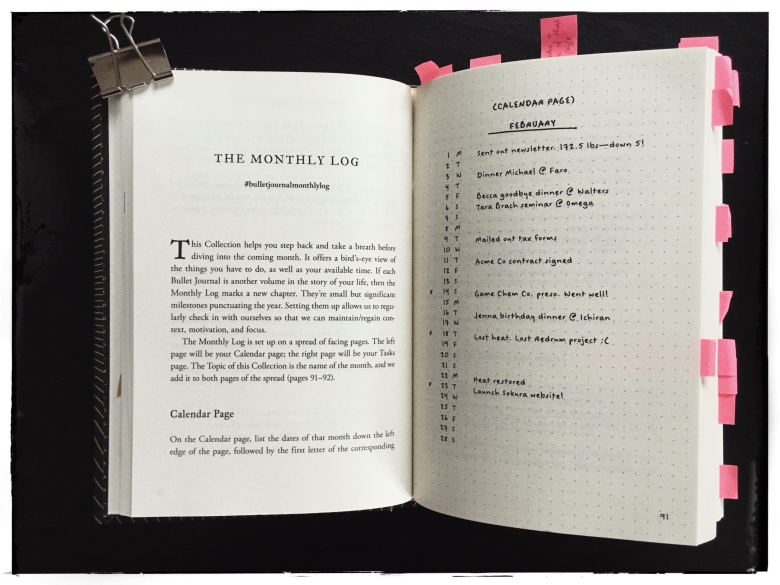
Studies have suggested that we have 50,000 to 70,000 thoughts per day. For context, if each thought were a word, that means that our minds are generating enough content to produce a book Every. Single. Day. Unlike a book, our thoughts are not neatly composed. On a good day they’re vaguely coherent. This leaves out minds perpetually struggling to sort this gray matter gallimaufry. Where do you even begin? What comes first? Inevitably we find ourselves tackling too many things at the same time, spreading our focus so thin that nothing gets the attention it deserves. This is commonly referred to as “being busy.” Being busy, however, is not the same as being productive.
— Ryder Carroll The Bullet Journal Method
My bullet journal story
I started bullet journaling more than 3 years ago, though it wasn’t all sunshine and roses from day one. At first, I wanted to organize my ADHD brain by using a bullet journal, which didn’t work as planned — until I gave the bullet journal another go and made it work for ADHD me. However, back when Wonderguy introduced me to the concept of bullet journaling, I was rather underwhelmed, to put it mildly.
Watching a video by Ryder Carroll in which he introduces the ‘bujo’ to the world I found the idea intriguing and interesting but wasn’t sure it would work for me. After halfheartedly journaling for a few months in 2016 I quit, only to return to it in the summer of 2018 after realizing that bullet journaling could be extremely helpful for people with ADHD — like me. What brought me back to the bujo was watching How to ADHD Jessica’s video about the bullet journal and how it could improve my everyday life. In it, she shares her own bujo story and gives advice on how to succeed — which she also wrote about in a later guest post on bulletjournal.com. This inspired me to give the concept another try since I’m always open to ways to optimize my ADHD-me without meds.
The second time around I tried harder, buying a new notebook and pens and getting more creative with my spreads and lists and the like. This time around it worked and I’m currently on my third notebook in 17 months. Overall, bullet journaling works way better than most organizational systems/methods or apps I’ve tried over the years, so I’ll stick to it. Pinterest and Instagram are huge inspirations and I realized how much I enjoy drawing and creating bujo (short for ‘bullet journal’) layouts, which offer me a creative outlet while also doing something useful and relaxing. As with Marie Kondo’s ‘spark of joy’, the bullet journal won my heart the second time around.
And until roughly three weeks ago I never thought about diving deeper into the subject because hey, it works for me, so what else?
The Bullet Journal Method – the book
Well, in 2018 Ryder finally wrote a book about his organizational system called The Bullet Journal Method. I immediately put it on my wishlist and shortly before the start of my Low Buy 2020 challenge on January 1st, I decided to treat myself to a few more books, amongst them being Ryder Carroll’s book. I read it in two days — probably because I had some previous knowledge but mainly because its conversational tone and the way Ryder structures the book make it an easy and inspiring read.
Starting with “Preparation” concerning such topics as why we journal the way we do and how it could help you, he goes on to explain “The System” — a how-to bullet journal on a practical level —, which is followed by “The Practice”, a close-up look on how-to and also why to bullet journal on a theoretical and mental level, followed by “The Art” about additional important elements of a bujo. Throughout the book, you find parts that are designed like bullet journal entries to emphasize his point and illustrate Ryder’s concept of the bullet journal.

Clearing up some misconceptions
Though I’ve been bullet journaling for some time now I still found new insights and ideas. Reading the book I realized that I had completely misunderstood the idea of collections — instead of using them as a way to collect notes, ideas, or make a list, I always thought they were a sort of advanced to-do or shopping list firmly set at the beginning of the bullet journal and without any logic or system. I’ve never made any use of collections therefore, even though I made tons of lists, like tracking my reading, collecting meal ideas, my wish list of books I want to buy, and sewing projects I want to tackle…I’ve just never thought of them as ‘(custom) collections’ and that I could use them in various ways and for different purposes, not just as some sort of shopping list.

My ADHD brain doesn’t even know the meaning of ‘long-term’
I’ve never worked on my goals in my bujo, mainly because I don’t think that much about goals and plans in general. Since my sanity bid farewell and decided to go rogue on anxiety and depression many years ago, I refuse to make long-term plans because I think of them as a waste of time and energy. So much can happen in only a few weeks or even days and I don’t like to plan traditionally anymore. Also, ADHD isn’t exactly helpful in the planning department. Instead, I prefer to structure my projects (and life) in a to-do list kind of doable chunks with a rather open schedule.
So when Ryder tasks us with focusing on our goals and structuring them according to his system — 5 years, 4 months, 3 weeks, 2 days, and 1 hour — I was overwhelmed, surprised, and a bit angry at the same time. With ADHD, I can do rough outlines of bigger projects — as stated above, in smaller, more feasible chunks — but I sure as hell have no idea where I’ll be in five years’ time, and I also don’t care. My (ADHD) brain doesn’t work like that.
Deadlines and time frames work much better for me, as such parameters allow room for bad ADHD fuzzybrain episodes. However, rigid structures and schedules often set me up for failure in the first place, as they show no flexibility for the days when my fuzzybrain prefers to hyperfocus on creating a playlist inspired by The OC with EVERY song ever played on the show in the correct order. Or when I feel the urgent need to clean out the kitchen cabinets while listening to true crime podcasts about highway killers. Because my brain says so, no matter what’s on THE plan.
Needless to say, while I completed this task, I found it unnerving. Thinking hard about what I wanted to do in the given periods when doing Ryder’s exercise was a challenge for someone like me who usually rather waits to see what would come up — sometimes also for practical reasons in regards to working freelance jobs — than actively planning the upcoming weeks, months, or even years. Therefore, I got proof of what I’ve already known beforehand: that this doesn’t work for me and I don’t care about it at all.
Two paths and the illusion of choice
Another exercise I did not find to be helpful was one in which Ryder wants us to find ‘our meaning.’ To do so, he describes the exercise of “Two Lives” — inspired by Robert Frost’s poem “The Road not taken” — in which we should write two different obituaries for ourselves: one for the self that took the well-worn path (stayed within the familiar) and another for the self that took the path less traveled. After doing so, we should reflect on the two lives we described, what we felt during this exercise, what we realized while writing the obituaries, which life we preferred, and how we could integrate the accomplishments described in the obituary into our own goals.
I found this exercise a bit pointless since I assume most of us prefer one of the two options long before actively deciding which life we like better, therefore following a (subconscious?) inner guidance when writing the obituaries. Also, as stated before, I don’t plan long-term, so I had a hard time imagining two different life paths that I could relate to. And while I did my best, I was glad once I got it done and I could go on reading.
Overall, I found these two exercises rather underwhelming, but I assume that may be because of my individual ADHD traits and symptoms. Others may (hopefully) feel elated and inspired by the book’s exercises.
Benefits and Insights
[…] the benefits of writing by hand stem from the very complaint consistently leveraged against it: inefficiency. That’s right: The fact that it takes longer to write things out by hand gives handwriting its cognitive edge.
I agree with Ryder Carroll that one of the main benefits of bullet journaling is writing by hand: the haptic experience of the notebook itself, the countless options on how to tackle your special interests and needs in this very own notebook of yours is what makes the bullet journal unique. Everything you add, be it colorful spreads, creative doodles, various collections, and whatever you need that makes it work for you is the special magic of this concept.

I thought long about buying this book because I already practice bullet journaling and I didn’t ‘need’ the book. I don’t follow Ryder’s concept to the t because I need some color in my system to better navigate my notes and plans (and I’ve come to realize that I enjoy drawing and making collages and all that). Though I embrace minimalism in various parts of my life, my monthly spread is not the place to be as minimalist as Ryder is, and that’s also what he mentions repeatedly: What makes the bullet journal special is how adaptable it is. You do you, and while he provides you with a concept and overall structure, what you make of it is up to you.
In his book, he gives an excellent overview of his method with an in-depth analysis of its concepts and ideas. And though you can find information and inspiration regarding the bullet journal all over the internet, nothing beats the original source. Ryder does not simply bolt through his ideas and topics, eager to fill a book with much information and hardly any soul. Instead, he gives insights into how he came to develop the bullet journal method in the first place and what fundamental issues lie beneath, such as the positive effects of writing by hand, why rapid-logging is beneficial to the fast mind, and why we should keep track of our goals (#LOLmyfuzzybrain …).
Without reading this book, I would’ve never realized how much more a bullet journal can be than just a ‘personalized planner.’ So if you’re already bullet journaling and feel like it is perfect just the way it is, you may feel no need to read this book. But if you are curious about what this concept could do for you, apart from the obvious things so well documented on YouTube, Instagram, and Pinterest, you may want to give this book a try.
I am happy I did, and it will continue to inspire and guide me for some time to come.
